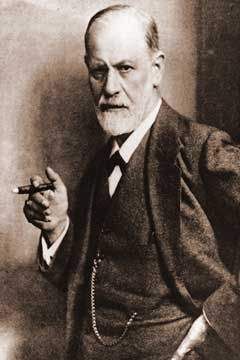Ознакомительная версия.
Greenson, R. R. (1968). Dis – identifying from mother: Its special importance for the boy. Int. J. Psychoanal., 49:370-374.
Greenspan, S. 1. (1979). Intelligence and adaptation: An integration of psychoanalytic and Piagetian developmental psychology. Psychological Issues, Monograph 47/48. New York: Int. Univ. Press.
Greenspan, S. l. (1981). Psychopathology and adaptation in infancy and early childhood: Principles of clinical diagnosis and preventive intervention. New York: Int. Univ. Press.
Greenspan, S. l. (1988). The development of the ego: Insights from clinical work with infants and young children. Amer. Psychoanal. Assn., 36 (Suppi.): 3-55.
Grolnick, S, A., and Barkin, L, eds. (1978). Between reality and fantasy: Transitional objects and phenomena. New York: Aronson.
Gross, G. E., and Rubin, 1. A. (1972). Sublimation: The study of an instinctual vicissitude. Psychoanal. Study Child, 27:334-359.
Grosskurth, P. (1986). Melanie Klein. New York: Knopf.
Grossman, W. l., and Stewart, W. (1976). Penis envy: From childhood wish to the developmental metaphor. J. Amer. Psychoanal. Assn., 24 (Suppi.): 193-212.
Gunsberg, L. (1982). A selected critical review of psychological investigations of the father – infant relationship. In Father and child, cd. S. H. Cath, A. R. Gurwitt, and J. M. Ross. Boston: Little, Brown, pp. 65-82.
Guntrip, H. (1961). Personality structure and human interaction. New York: Int. Univ. Press.
Guntrip, H. (1969). Schizoid phenonena, object relations and the self. New York: Int. Univ. Press.
Guntrip, H. (1975). My experience of analysis with Fairbairn and Winnicott. Int. Rev. Psychoanal., 2:145-156.
Guntrip, H. (1978). Psycho-analysis and some scientific and philosophical critics. Brit. J. Med. Psychol., 51:207-224.
Haith, M. M., Bergman, Т., and Moore, M. J. (1977). Eye contact and face scanning in early infancy. Science, 198:853-855.
Hall, G. S. (1904). Adolescence: Its psychology and its relations to physiology, anthropology, sociology, sex, crime, religion and education. New York: Appleton, 1916.
Hanly, C. (1978). Instincts and hostile affects. Int. J. Psychoanal., 59:149-156.
Harley, M. (1961). Genitality and structural development of adolescence. Amer. Psychoanal. Assn., 9:434-460.
Harley, M., and Weil, A. P. (1979). Introduction. In Infantile psychosis and early contributions. Vol. I of The selected papers of Margaret S. Mahler. New York: Aronson, pp. ix—xx.
Harlow, H. F. (1960a). Affectional behavior in the infant monkey. In Central nervous system and behavior, ed. M. A. B. Brazier. New York: Josiah Macy, Jr., Foundation, pp. 3-21.
Harlow. H. F. (1960b). Primary affectional patterns in primates. Amer. J. Ortho-psychiat., 30:676-684.
Harlow, H. F, and Zimmerman, R. R. (1959). Affectional responses in the infant monkey. Science, 130:421-432.
Harmon, R. J., and Ernde, R. N. (1971). Spontaneous REM behaviors in a microccphalic infant: A clinical anatomical study. Perceptual Motor Skills, 34:827-833.
Harmon, R, M.; Wagonfeld, S.; and Ernde, R. N. (1982). Anaclitic depression: A follow – up from infancy to puberty. Psychoanal. Study Child, 37:67-94.
Harries, M. (1952). Sublimation in a group of four – year – old boys. Psychoanal. Study Child, 7:230-240.
Hart, M., and Sarnoff, C. A. (1971). The impact of the menarche.y. Amer. Acad. Child Psychiat., 10:257-271.
Hartmann, H. (1939). Ego psychology and the problem of adaptation. New York: Int. Univ. Press, 1958.
Hartmann, H, (1950). Comments on the psychoanalytic theory of the ego. In Essays on ego psychology. New York: Int. Univ. Press, 1964, pp. 113-141.
Hartmann, H. (1952). The mutual influences in the development of ego and id. In Essays on ego psychology. New York: Int. Univ. Press, 1964, pp. 155-182.
Hartmann, H. (1953). Contribution to the metapsychology of schizophrenia. In Essays on ego psychology. New York: Int. Univ. Press, 1964, pp. 182-206.
Hartmann, H. (1955). Notes on the theory of sublimation. In Essays on ego psychology. New York: Int. Univ. Press, 1964, pp. 215-240.
Hartmann, H. (1956). Notes on the reality principle. In Essays on ego psychology. New York: Int. Univ. Press, 1964, pp. 241-267.
Hartmann, H., and Kris, E. (1945). The genetic approach in psychoanalysis. Psychoanal. Study Child, 1: 11-30.
Hartmann, H.; Kris, E.; and Locwenstein, R. (1946). Comments on the formation of psychic structure. Psychoanal. Study Child, 2:1 1-38.
Hartmann, H., and Loewenstein, R. (1962). Notes on the superego. Psychoanal. Study Child, 17:42-81.
Hayman, A. (1969). What do we mean by «Id»? J. Amer. Psychoanal. Assn., 17:353-380.
Hayman, A. (1989). What do we mean by «phantasy»? Int. J. Psychoanal., 70:105-114.
Heimann, P. (1962). Notes on the anal stage. Int. J. Psychoanal., 43:406-414.
Heimann, P. (1966). Comments on Dr. Kernberg's paper (Structural derivatives of object relationships). Int.J. Psychoanal., 47:254-260.
Herzog, E., and Sudia, C, (1973). Children in fatherless families. In Review of child development research. Vol. 3, ed. В. М. Caldwell and H. N. Ricciuti. Chicago: Univ. of Chicago Press, pp. 141-232.
Herzog, J. M. (1980). Sleep disturbance and father hunger in 18 – to 28 – month – old boys: The Erikonig syndrome. Psychoanal. Study Child, 35:219-233.
Herzog, J. M. (1982). On father hunger: The father's role in the modulation ofaggressive drive and fantasy. In Father and child, ed. S. W. Cath, A. R. Gurwitt, and J. M. Ross. Boston: Little, Brown, pp. 163-174.
Herzog, J. M. (1984). Fathers and young children: Fathering daughters and fathering sons. In Frontiers of infant psychiatry. Vol. 2, cd.J. D. Call, E. Galenson, and R. L. Tyson. New York: Basic Books, pp. 335-342.
Hotter, W. (1949). Mouth, hand and ego integration. Psychoanal. Study Child, 3/4:49-56.
Hoffer, W. (1950a). Oral aggressiveness and ego development. Int. J. Psychoanal., 31:156-160.
Hoffer, W. (1950b). The development of the body ego. Psychoanal. Study Child, 5:18-24.
Hoffer, W. (1952). The mutual influences in the development of Ego and Id: Earliest stages. Psychoanal. Study Child, 7:31-41.
Holder, A. (1982). Prcocdipal contributions to the formation of the superego. Psychoanal. Study Child, 37:245-272.
Holt, R. R. (1967), Motives and thought: Psychoanalytic essays in honor of David Rapaport. Psychological Issues, Monograph 18/ 19. New York: Int. Univ. Press.
Homey, K. (1924), On the genesis of the castration complex in women. In Feminine psychology, ed. H. Kelman. New York: Norton, 1967, pp. 37-53.
Homey, K. (1926). The flight from womanhood: The masculinity complex in women as viewed by men and women. Int. J. Psychoanal., 7:324-339.
Homey, K. (1933). The denial of the vagina. In Feminine psychology, ed. H. Kelman. New York: Norton, 1967, pp. 147-161.
Homey, K. (1967). Feminine psychology, ed. H. Keiman. New York: Norton.
Hughes, J. M. (1989). Reshaping the psychoanalylic domain: The work of Melanie Klein, W. R. D. Fairbairn and D. W Wlnmcott. Berkeley: Univ. of California Press.
Inhelder, B. (1970). Operational thought and symbolic imagery in cognitive development in children. Chicago: Univ. of Chicago Press.
Inhelder, В., and Piaget. J. (1958). The growth of logical thinking: From childhood to adolescence. New York: Basic Books.
Isay, R. A. (1989). Being homosexual: Gay men and their development. New York: Farrar, Straus, and Giroux.
Izard, С. Е. (1971). The face of emotion. New York: Appleton – Century-Crofts.
Izard, С. Е. (1972). Patterns of emotions. New York: Academic Press.
Jacobson, E. (1937). Ways of female superego formation and the female castration conflict. Psychoanal. 45:525-538.
Jacobson, E. (1946). The effect of disappointment on ego and superego formation in normal and depressive development. Psychoanal. Rev., 33:129-147.
Jacobson, E. (1953). The affects and their pleasure-unpleasure qualities in relation to the psychic discharge processes. In Drives, affects, behavior, ed. R. Loewenstein. New York: Int. Univ. Press, pp. 38-66.
Jacobson, E. (1954). The self and the object world: Vicissitudes of their infantile cathexis and their influences on ideational and affective development. Psychoanal. Study Child, 9:75-127.
Jacobson, E. (1961). Adolescent moods and the remodeling of psychic structures in adolescence. Psychoanal. Study Child, 16:164-183.
Jacobson, E. (1964). The self and the object world. New York: Int. Univ. Press.
Jacobson, J. G. (1983a). The structural theory and the representational world. Psychoanal. Q., 52:514-542.
Jacobson, J. G. (1983b). The structural theory and the representational world: Developmental and biological considerations. Psychoanal. ()., 52:543-563.
Jacobson, S. W. (1979). Matching behavior in the young infant. Child Develop., 50:425-430.
James, M. (1960). Premature ego development. Int. J. Psychoanal., 41:288-294.
James, W. (1890). The principles of psychology. New York: Holt, Rinehart and Winston.
Jaques, E. (1981). The midlife crisis. In Adulthood and the aging process. Vol. 3 of The course of life, ed. S. l. Greenspan and G. H. Pollock. Publication No. (ADM) 81-1000. Washington, D.C.: DHHS, pp. 1-23.
Joffe, W. G. (1969). A critical review of the status of the envy concept. Int. J. Psychoanal., 50:533-545.
Joffe, W. G., and Sandier, J, (1965). Notes on pain, depression and individuation. Psychoanal. Study Child, 20:394-424.
Joffe, W. G., and Sandier, J. (1967). Some conceptual problems involved in the consideration of disorders of narcissism.y. Child Psychother., 2:56-66.
Johnson, A. M., and Szurek, S. A. (1952). The genesis of antisocial acting out inchildren and adults. Psychoanal. Q., 21:323-343.
Jones, E. (1916). The theory of symbolism. In Papers on psychoanalysis. Boston: Beacon Press. 1961, pp. 87-144.
Jones, E. (1922). Some problems of adolescence. In Papers on psycho-analysis. Boston: Beacon Press, 1961, pp. 389-406.
Jones, E. (1926). The origin and structure of the super-ego. In Papers on psycho-analysis. Boston: Beacon Press, 1961, pp. 438-457.
Jones, E. (1927). The early development of female sexuality. In Papers on psycho-analysis. Boston: Beacon Press, 1961, pp. 438-457.
Jones, E. (1929). Fear, guilt and hate. Int.J. Psychoanal., 10:383-397.
Jones, E. (1933). The phallic phase. In Papers on psycho-analysis. Boston: Beacon Press, 1961, pp. 452-484.
Jones, E. (1935). Early female sexuality. Int. J. Psychoanal., 16:263-273.
Jones, E. (1947). The genesis of the super-ego. In Papers on psycho-analysis. Boston: Beacon Press, 1961, pp. 145-152.
Jones, E. (1953). The life and work of Sigmund Freud. Vol. 1. New York: Basic Books.
Kagan, J. (1978). The growth of the child: Reflections on human development. New York: Norton.
Kaplan, E. B. (1965). Reflections regarding psychomotor activities during the latency period. Psychoanal. Study Child, 20:220-238.
Katan, A. (1951). The role of «displacement» in agoraphobia. Int. J. Psychoanal., 32:41-50.
Katan, A. (1961). Some thoughts about the role ofverbalization in childhood. Psychoanal. Study Child, 16:184-188.
Katan, A. (1972). The infant's first reaction to strangers: Distress or anxiety? Int. J. Psychoanal., 53:501-503.
Keniston, K. (1971). Youth as a stage of life. In Adolescent psychiatry. Vol. I, ed. S. D. Feinstein, P. L. Giovacchini, and A. A. Miller. New York: Aronson, pp. 161-175.
Kernberg, O. F. (1969). A contribution to the ego-psychological critique of the Kleinian school. int. J. Psychoanal., 50:317-333.
Kernberg, O. F. (1974a). Barriers to falling and remaining in love. Amer. Psychoanal. Assn., 22:486-511.
Kernberg, O. F. (1974b). Mature love: Prerequisites and characteristics. J. Amer. Psychoanal. Assn., 22:743-768.
Kernberg, O. F. (1975). Borderline conditions and pathological narcissism. NewYork: Aronson.
Kernberg, O. F. (1976). Object relations theory and clinical psychoanalysis. New York: Aronson.
Kernberg, O. F. (1977). Boundaries and structures in love relations. Amer. Psychoanal. Assn., 25:81-114.
Kernberg, O. F. (1980a). Internal world and external reality: Object relations theory applied. New York: Aronson.
Kernberg, O. F. (1980b). Adolescent sexuality in the light of group processes. Psychoanal. Q., 49:27-47.
Kernberg, O. F. (1980c). Love, the couple, and the group; a psychoanalytic frame. Psychoanal. Q., 49:78-108.
Kernberg, O. F. (1982). Self, ego, affects and drives.y. Amer. Psychoanal. Assn., 30:893-917.
Kernberg, O. F. (1984). Severe personality disorders: Psychotherapeutu strategies. New Haven: Yale Univ. Press.
Kernberg, O. F. (1987). An ego psychology-object relations theory approach to the transference. Psychoanal. Q., 51:197-221.
Kestenberg, J. S. (1956a). On the development of maternal feelings in early childhood. Psychoanal. Study Child, 11:257-291.
Kestenberg, J. S. (1956b). Vicissitudes of female sexuality.y. Amer. Psychoanal. Assn., 4:453-476.
Kestenberg, J. S. (1961). Menarche. In Adolescence: Psychoanalytic approach to problems and therapy, ed. S. Lorand and H. Schneer. New York: Harper, pp. 19-50.
Kestenberg, J. S. (1968). Outside and inside, male and female. J. Amer. Psychoanal. Assn., 16:457-520.
Kestenberg, J. S. (1975). Children and parents: Psychoanalytic studies in development. New York: Aronson.
Kestenberg, J. S. (1976). Regression and reintegration in pregnancy.y. Amer. Psychoanal. Assn.. 14:213-250.
Khan, M. (1963). The concept of cumulative trauma. Psychoanal. Study Child, 18:286-306.
Klaus, M. H., and Kennell. J. H. (1976). Maternal-infant bonding. St. Louis: C. V. Mosby.
Kleeman, J. A. (1965). A boy discovers his penis. Psychoanal. Study Child, 20:239-266.
Kleeman, J. A. (1966). Genital self-discovery during a boy's second year: A follow-up. Psychoanal. Study Child, 21:358-392.
Kleeman, J. A. (1971). The establishment of core gender identity in normal girls. Archs. Sexual Behavior, 1:117-129.
Kleeman, J. A. (1976). Freud's views on early female sexuality in the light of direct child observation. J. Amer. Psychoanal. Assn., 24 (Suppl.):3-27.
Klein, G. S. (1976a). Freud's two theories of sexuality. In Psychology versus metapsychology: Psychoanalytic essays in memory of George S. Klein, ed. M. M. Gill and P. S. Hoizman. Psychological Issues, Monograph 36. New York: Int. Univ. Press, pp. 14-70.
Klein, G. S. (1976b). Psychoanalytic theory: An exploration of essentials. New York: Int. Univ. Press.
Klein, M. (1928). Early stages of the Oedipus conflict. In The writings of Melanie Klein. Vol. 1. London: Hogarth, 1975, pp. 186-198.
Klein, M. (1929). Infantile anxiety situations reflected in a work of art and inthe creative impulse. In The writings of Melanie Klem, Vol. 1. London: Hogarth, 1975, pp. 210-218.
Klein, M. (1930). The importance of symbol – formation in the development of the ego. In The writings of Melanie Klein. Vol. I. London: Hogarth, 1975, pp. 219-232.
Klein, M. (1933). The early development of conscience in the child. In The writings of Melanie Klein. Vol. 1. London: Hogarth, 1975, pp. 248-257.
Klein, M. (1935). A contribution to the psychogenesis of manic-depressive states. In The writings of Melanie Klein. Vol. 1. London: Hogarth, 1975, pp. 262-289.
Ознакомительная версия.



